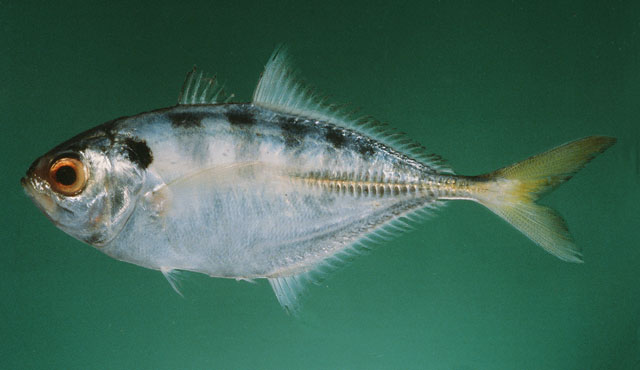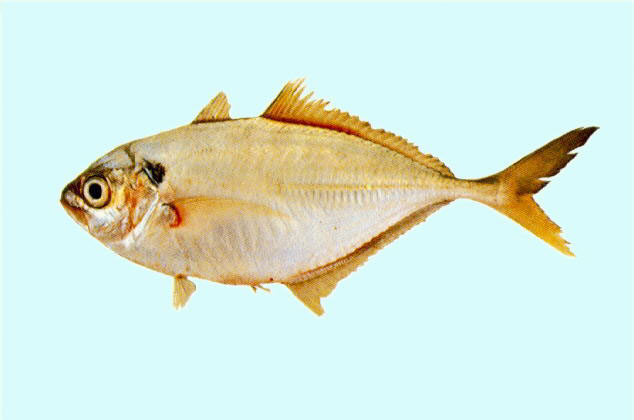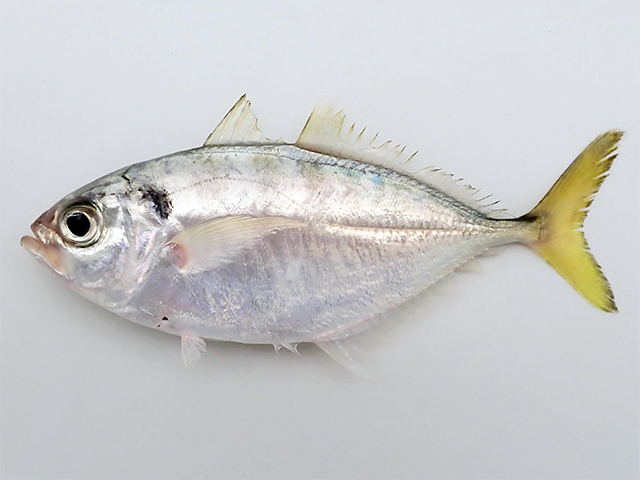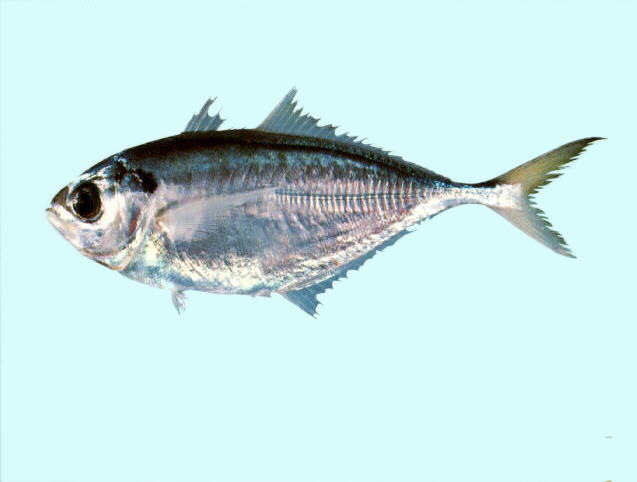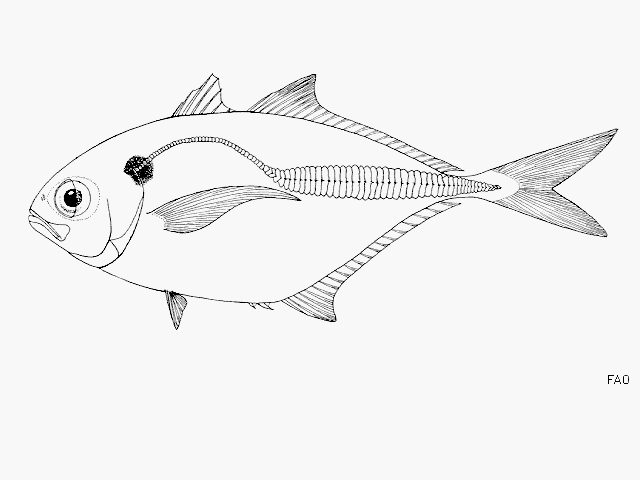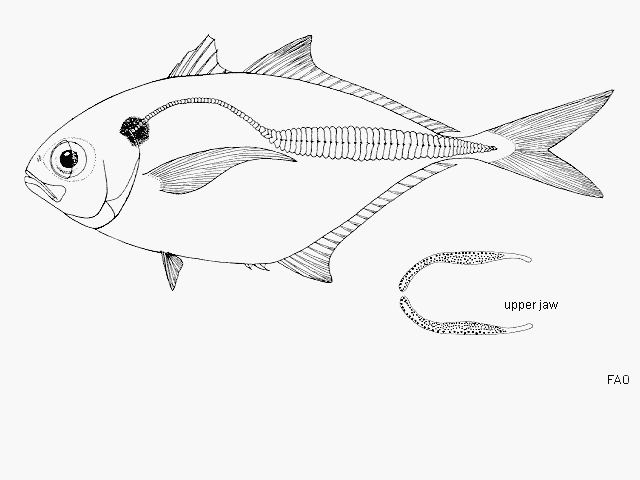Alepes
kleinii
(Bloch,
1793)
Razorbelly scad
View all media / Upload your photos and videos
Expand all
Classification / Names
Teleostei (teleosts) > Carangiformes (Jacks) >
Carangidae (Jacks and pompanos)
> Caranginae
Etymology: Alepes: Greek, alepis, -idos = without scales (Ref. 45335).
More on author:
Bloch.
Environment / milieu / depth range / climate zone / distribution range
Marine; reef-associated; depth range 5 - 100 m (Ref. 52753); tropical; 31°N - 26°S47°E - 154°E.
Distribution
Indo-West Pacific: Reported from Persian Gulf (Ref. 68964), coastal waters from Pakistan to Sri Lanka; east coast of India, Taiwan Island, Okinawa in Japan, the Philippines, Papua New Guinea and Australia. Records from South Africa, as Caranx kalla, are based on misidentifications of Alepes djedaba.
Maps

Alepes kleinii / Native range
AquaMaps Data sources:
GBIF
OBIS
This map was computer-generated and has not yet been reviewed.

Alepes kleinii / Suitable habitat
AquaMaps Data sources:
GBIF
OBIS
This map was computer-generated and has not yet been reviewed.

Alepes kleinii / Point map
AquaMaps Data sources:
GBIF
OBIS
This map was computer-generated and has not yet been reviewed.

Alepes kleinii / Year 2050
AquaMaps Data sources:
GBIF
OBIS
This map was computer-generated and has not yet been reviewed.
Length at first maturity / Size / Weight / Age
Biology
Adults are found inshore and in coastal waters throughout its range. Feed mainly on planktonic crustaceans and larval fishes. Marketed fresh and dried salted.
Main reference
Randall, J.E. 1995 Coastal fishes of Oman. University of Hawaii Press, Honolulu, Hawaii. 439 p. (Ref. 11441)
IUCN Red List Status (Ref. 125652)
Least Concern (LC); date assessed: March 10 2015
CITES (Ref. 131153)
Not Evaluated
CMS (Ref. 116361)
Not Evaluated
Threat to humans
Harmless
More information
- Countries
- FAO areas
- Ecosystems
- Occurrences
- Introductions
- Stocks
- Ecology
- Diet
- Food items
- Food consumption
- Ration
- Common names
- Synonyms
- Metabolism
- Predators
- Ecotoxicology
- Reproduction
- Maturity
- Spawning
- Spawning aggregation
- Fecundity
- Eggs
- Egg development
- Age/Size
- Growth
- Length-weight
- Length-length
- Length-frequencies
- Morphometrics
- Morphology
- Larvae
- Larval dynamics
- Recruitment
- Abundance
- References
- Aquaculture
- Aquaculture profile
- Strains
- Genetics
- Allele frequencies
- Heritability
- Diseases
- Processing
- Mass conversion
- Vision
- Pictures
- Stamps, Coins Misc.
- Sounds
- Ciguatera
- Speed
- Swim. type
- Gill area
- Otoliths
- Brains
Estimates based on models
Preferred temperature (Ref. 123201): 25.5 - 28.8, mean 27.9 °C (based on 606 cells).
Phylogenetic diversity index (Ref. 82804): PD50 = 0.5312 [Uniqueness, from 0.5 = low to 2.0 = high].
Bayesian length-weight: a=0.01288 (0.01158 - 0.01433), b=2.96 (2.93 - 2.99), in cm total length, based on LWR estimates for this species (Ref. 93245).
Trophic level (Ref. 69278): 3.5 ±0.4 se; Based on food items.
Generation time: 1.3 ( na - na) years. Estimated as median ln(3)/K based on 1 growth studies.
Resilience (Ref. 120179): High, minimum population doubling time less than 15 months (k >0.30).
Fishing vulnerability (Ref. 59153): Low vulnerability (16 of 100).
Price category (Ref. 80766): Medium; Very questionable: based on ex-vessel price for species in this family.
Nutrients (Ref. 124155): Calcium = 113 [66, 232] mg/100g; Iron = 1.21 [0.71, 2.12] mg/100g; Protein = 19.3 [18.2, 20.4] %; Omega3 = 0.165 [0.104, 0.272] g/100g; Selenium = 29.1 [17.2, 54.4] μg/100g; VitaminA = 113 [42, 295] μg/100g; Zinc = 1.39 [0.95, 1.94] mg/100g (wet weight);

